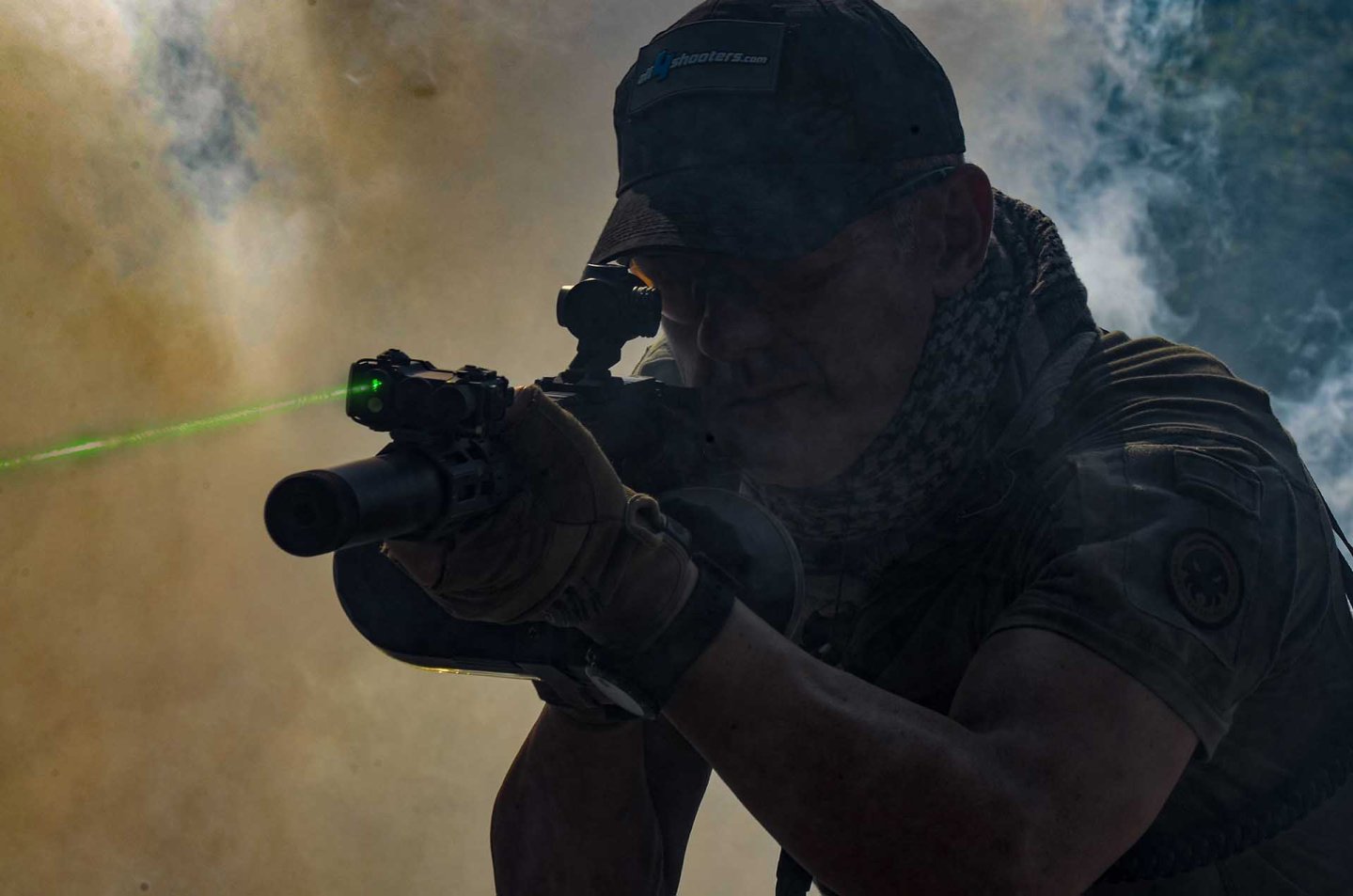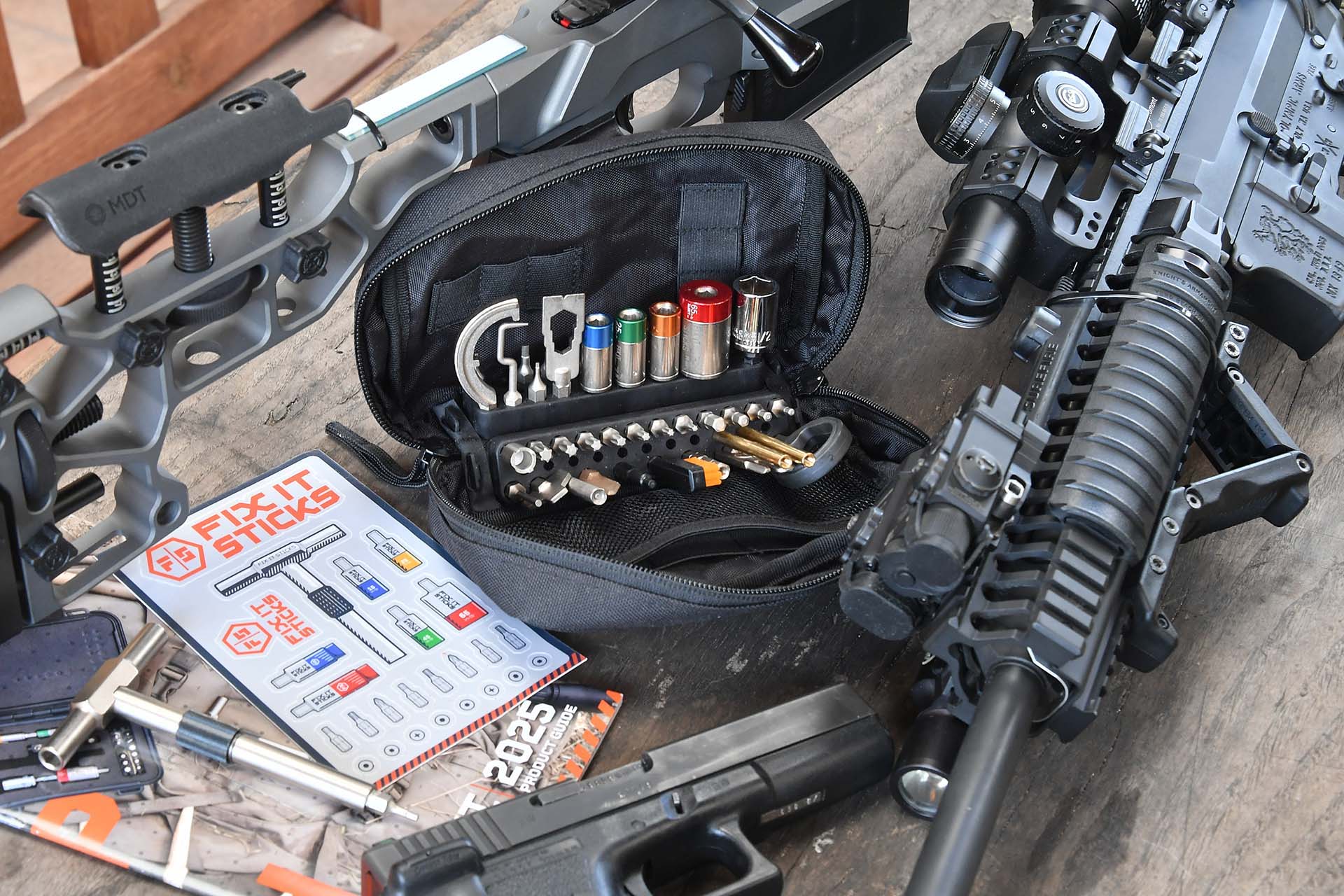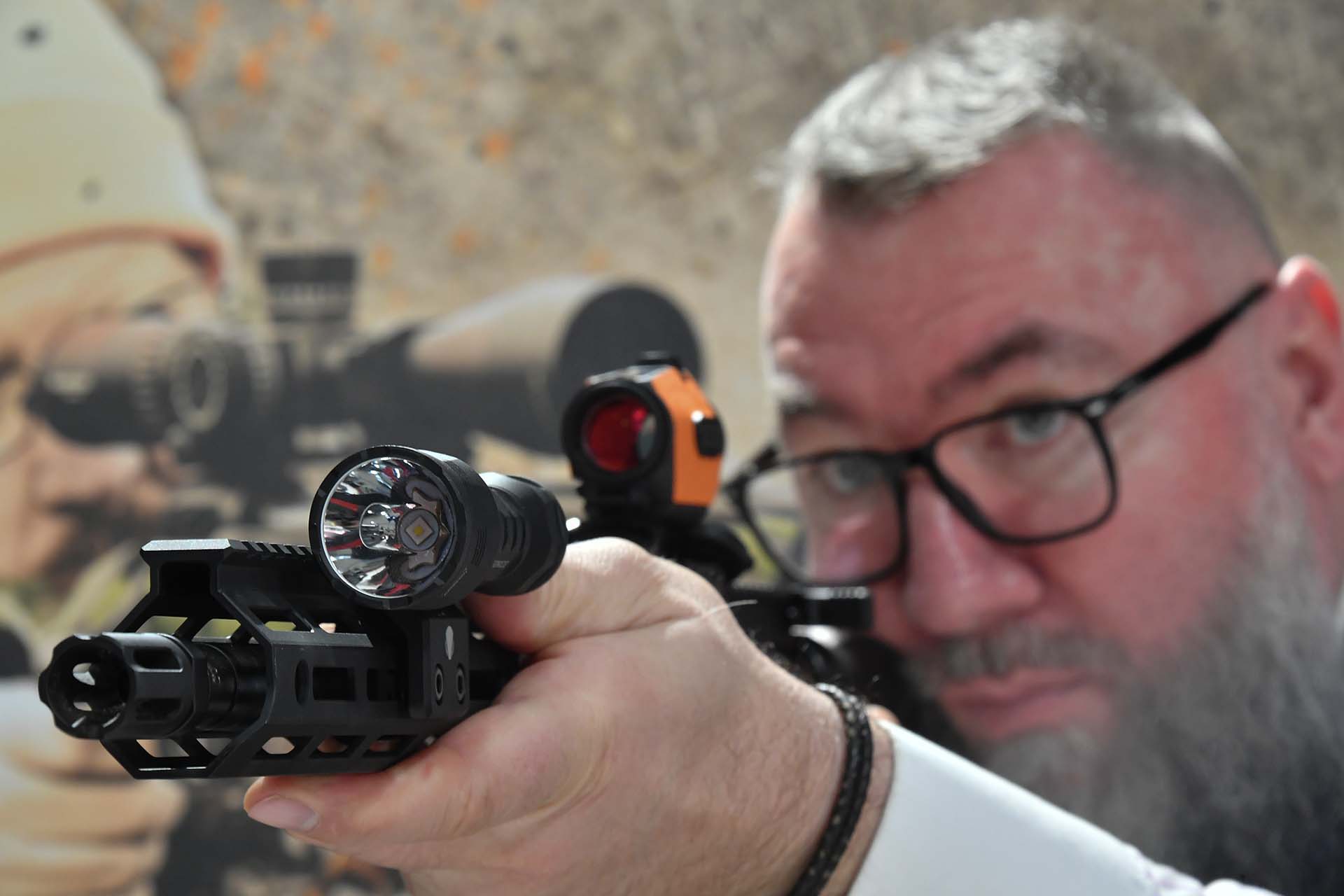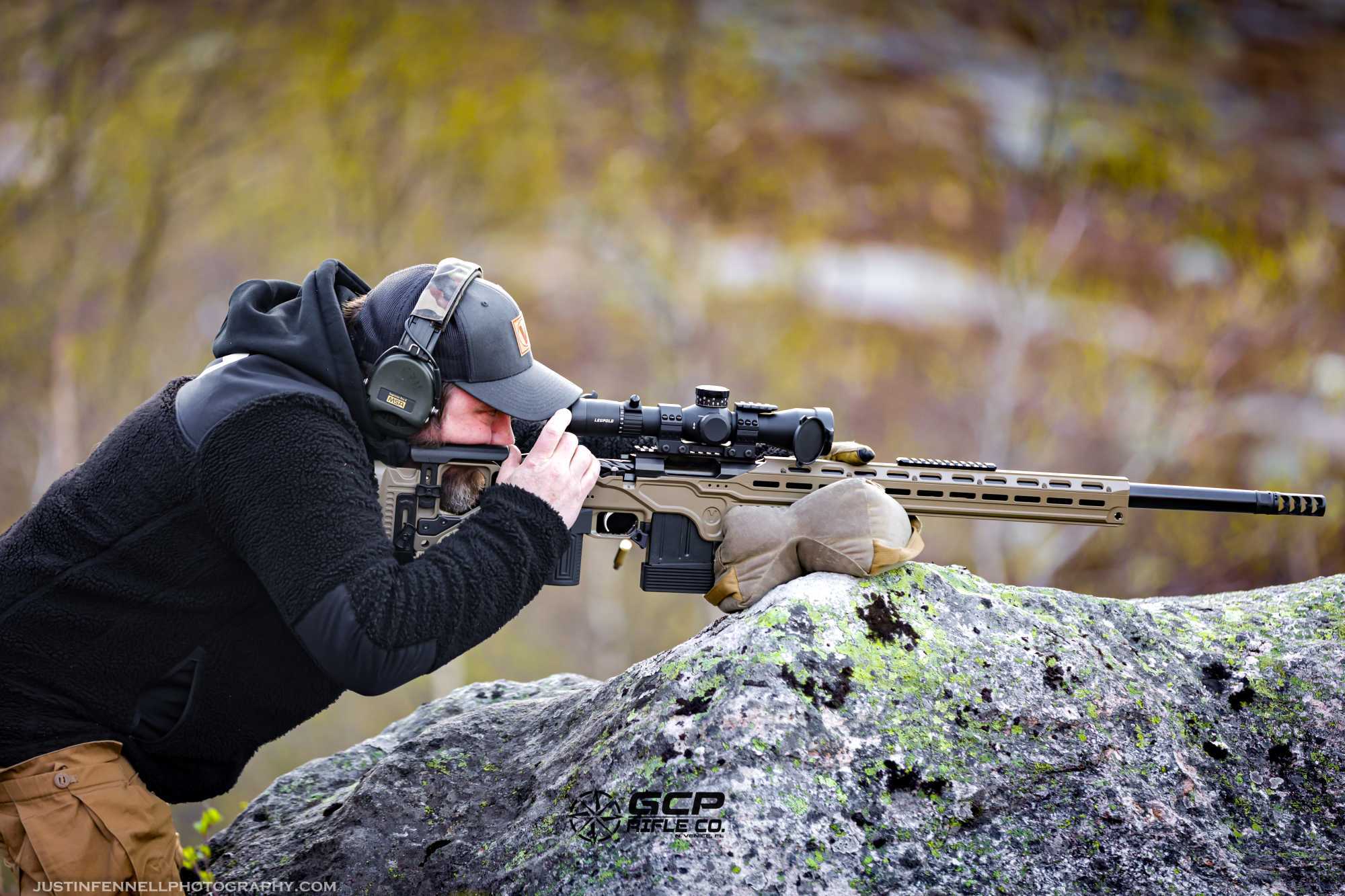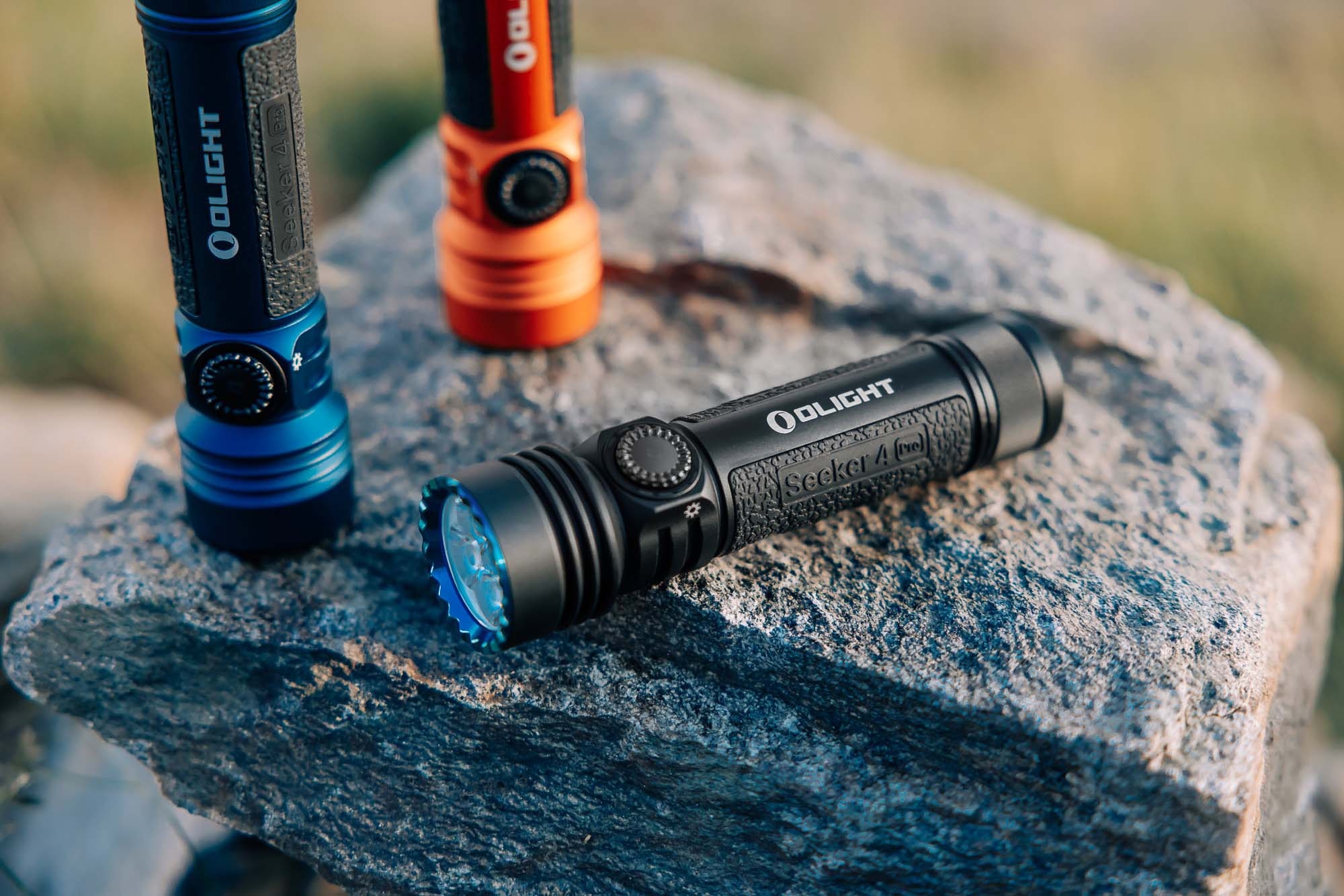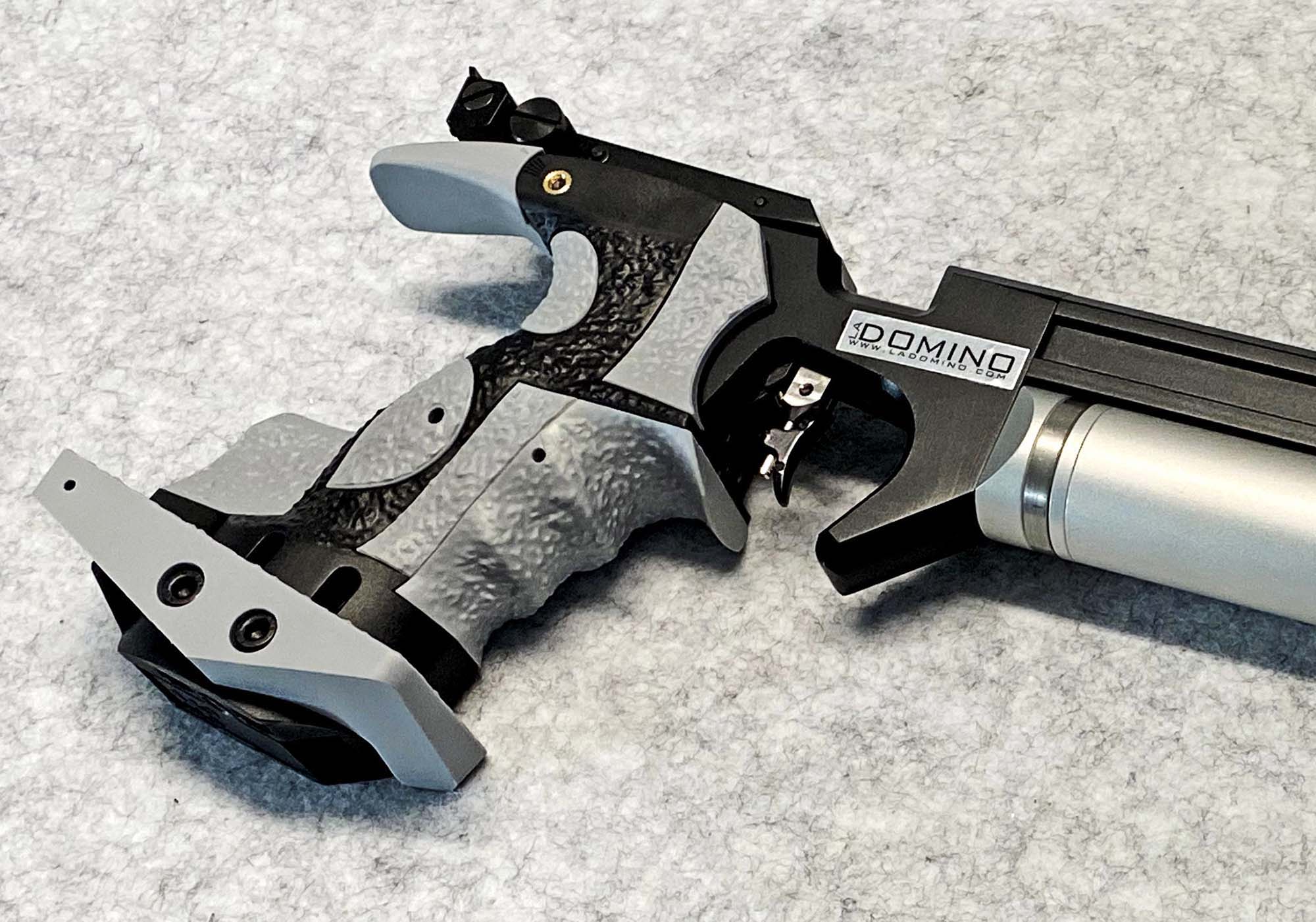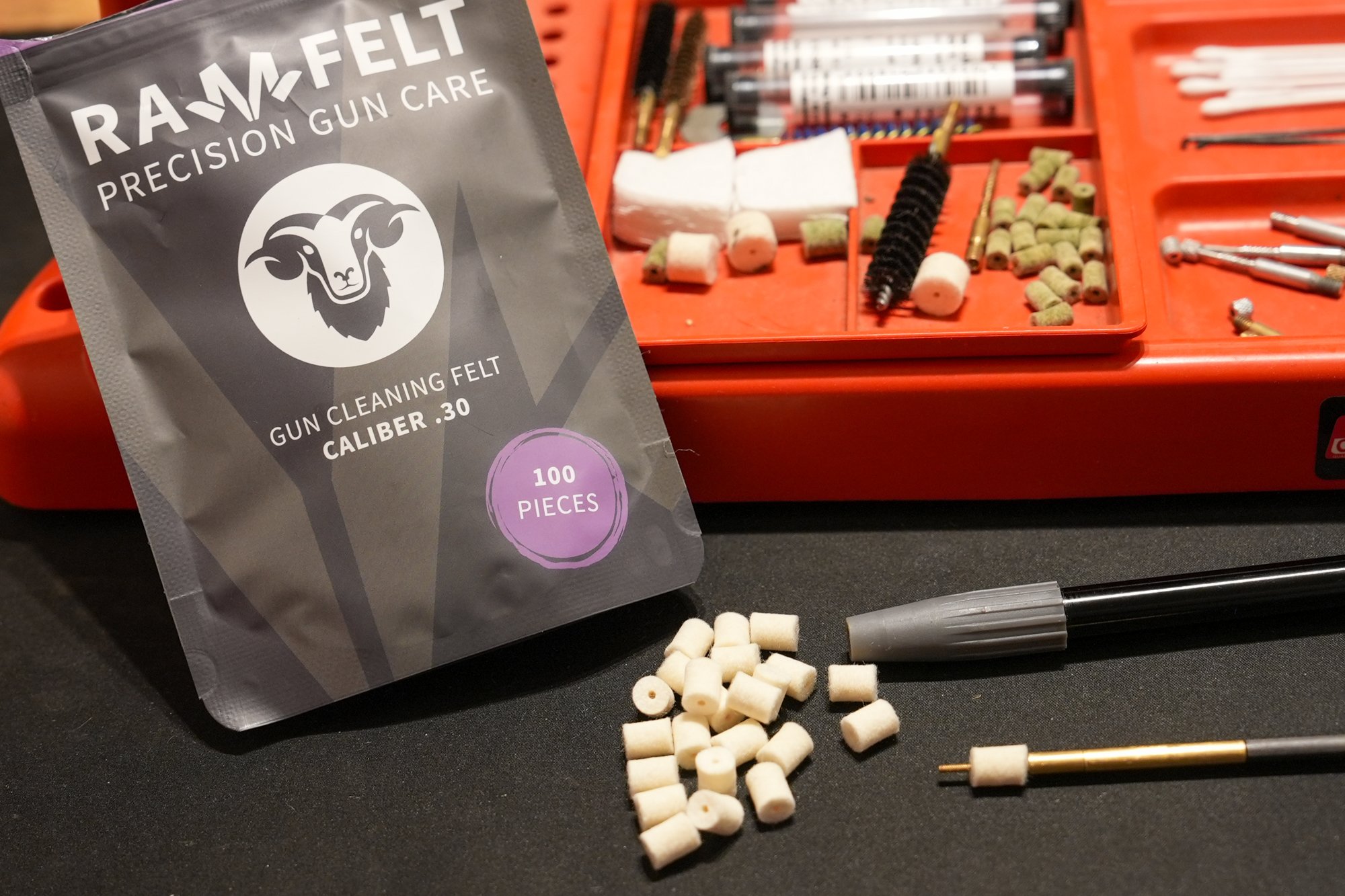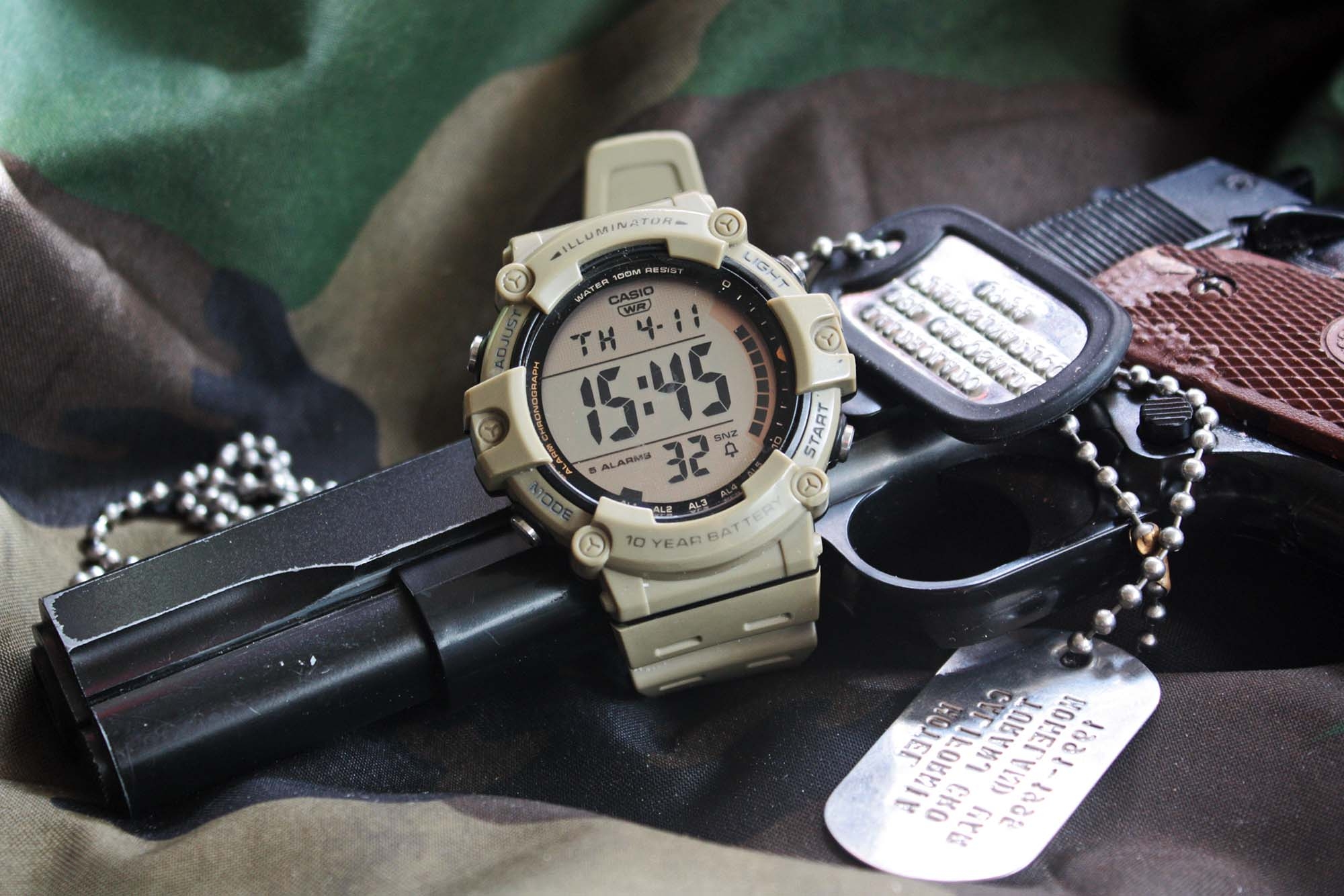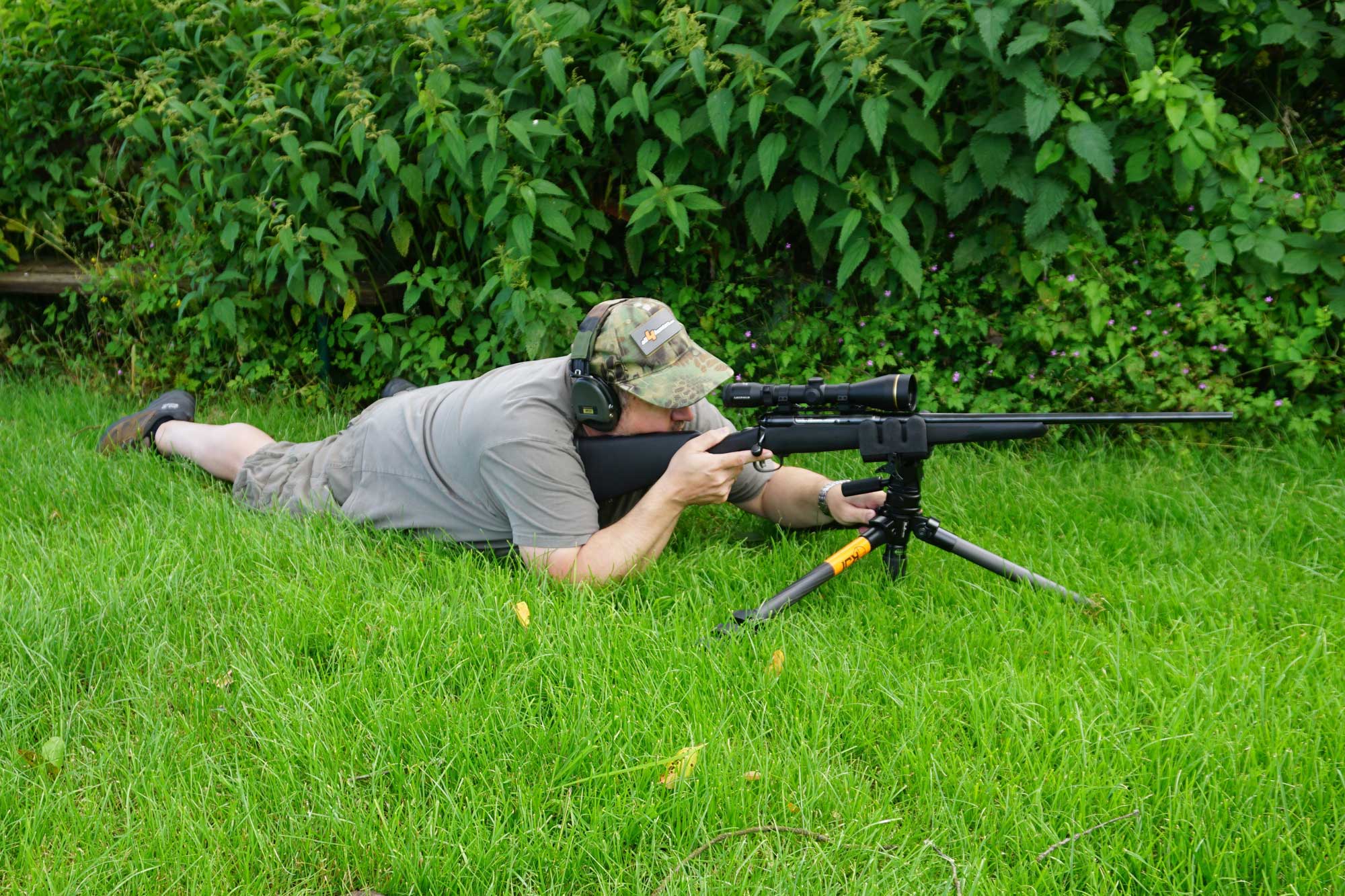Beamshot is an American brand based in California that for many years promoted and sold firearms mountable laser products mainly aimed to the civilian market. It is an extension to a very reputable Taiwanese laser manufacturer, Quarton, Inc. that for the last 34 years has built millions of industrial laser products for end user integration. Since early 2010 Beamshot offered on the restricted, professional U.S. market a full power IR and visible laser aimer/illuminator called the TRIZM, with the visible dot in either red or green. The TRIZM enjoyed some measure of success due to good performance, affordable MSRP and all-aluminum alloy construction, with a layout inspired from both Laser Devices’ DBAL and L3’s PEQ-15. However it was not a fully ruggedized and certified LAM (laser aiming module). Between 2020 and 21, Beamshot introduced the LAS31 visible/IR aiming and illuminator laser module, a true, full-spec AN/PEQ-15 compliant LAM.
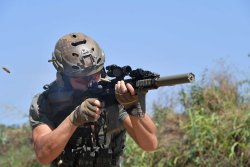
Before I delve in the features and details of the Beamshot LAS31, let’s take a brief look at what the AN/PEQ-15 represents. It is the successor of the first widely adopted LAM, the venerable Insight Technologies AN/PEQ-2a, introduced way back in early 1990 together with the massive and general availability of small, lightweight night vision devices to troops, which included the AN/PVS7 and PVS14, together to the PEQ-2a, also built in the million range.
“We Own the Night” became a well-known motto, and efforts of the U.S. and just about any other army following this lead to improve night optics and low-light combat brought forth the L3 ATPIAL (Advanced Target Pointer and Illuminator Aiming Laser), adopted as the AN/PEQ-15 in 2003- that is already 20 years ago! The PEQ-15 then rapidly spread over all services, becoming the most fielded and popular LAM, while other, more specialized LAMs like the NGAL were adopted by the SF community.
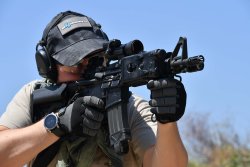
Today the PEQ-15 is a de-facto standard, and many manufacturers and armed forces around the world look at its specs as a base for LAM tenders. In this light, pardon the pun, Beamshot designed the LAS31 – literally, “laser, three in one” – to be spec-compliant to the PEQ-15. The LAS31 integrates a co-aligned, visible and IR aiming laser dot to a high-power, focusable IR Laser illuminator in a very small, relatively lightweight and quite rugged package, fully machined out of aerospace aluminum alloy with a built-in Picatinny rail grabber mount.
Beamshot LAS31, light and compact
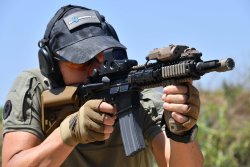
The manufacturer claims the LAS31 to be the “smallest and lightest AN/PEQ-15 compliant product available today, without compromising on performance or durability” – and sure enough, the 212-g weigh figure is just shy 3 grams of the 215 g of the L3 ATPIAL, and size figures are even better: the LAS31 is 85x75x44mm vs the PEQ-15’s 117x71x41mm – and L3-Harris’ “15” is built out of a fiber reinforced polymer. Declared laser performance specs are generally the same or better, notably the high-power output is quite brighter – especially of the illuminator, reaching 80 mW at 820-860 nm.
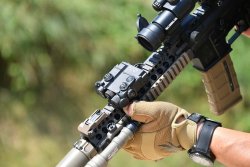
The LAS31 comes with a red (LAS31-R) or green (LAS31-G) visible laser, both rated at 15 mW at full power, making it a very visible dot in all situations. I received a LAS31-G, with a green laser, in a set that includes two remote pressure switches (one velcroed the other set up for Picatinny snap-on mount) that feature a magnetic connector to the LAM. The carry case includes a battery, manual, cleaning cloth, adhesive velcro patches and an adjusting tool – but no replacement lens covers.
I mounted the LAS31 on a variety of firearms, and with the collaboration of a military unit, I tested it with a Gen III, high FOM (1600+) PVS14 NVD and compared it with one of their standard issue ATPIAL’s on the same suppressed service weapon. The perceived weight of the LAS31 is exactly the same as the ATPIAL and there’s no difference in the gun’s handling; the user interface is a marked improvement, the single selector dial for IR/VIS and power selection, plus the two rear facing buttons that control the pointer type (on, strobe or off) can be operated more comfortably than reaching for a recessed dial on the top of the unit. The operator “A” helping me out still prefers his ATPIAL, but he admits to being used to it. Plus, just like Steiner’s DBAL-A3 that inspired the overall design of the LAS31, with a bit of practice it can be completely operated without a remote, using the top “fire” button to turn on and off the laser. Turning the dial from any position, i.e. from LO to HI, turns off the lasers.
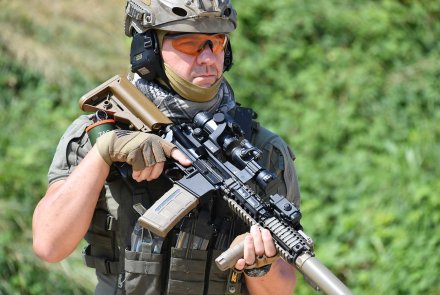
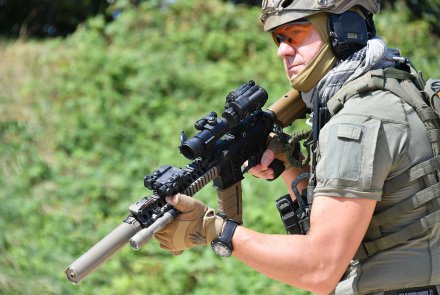
Battery used is the ubiquitous CR123A, powering the LAM (red laser) from 5 to up to 10 hours depending on the mode used; in average this could compare to the 6 hours specs of the ATPIAL in DH (Dual High) mode. Coalignment of the IR/VIS lasers is very good, both are basically aiming for the same spot at 100 m. Click values are sort of non-standard (0.8MOA/.23MRAD per click) but it’s better than no clicks, and adjustment range is good (120/20 MOA respectively for elevation/windage).

No pointer pattern generation caps, ND filters or illuminator diffuser are included, and although the IR illuminator has a nice round and relatively even beam that can be focused from a supertight 2 mRad to a wide 200 mRad, even in wide, the power is still too high to be used in close quarters. The manufacturer may offer a CQB diffuser for the IR illuminator as an aftersales option though. Plus, 8 full turns of the illuminator lens are needed to go from narrow to wide, too much in my opinion; half of that would be good.
Controls are very ergonomic, all knobs and dials are nice and tight, and the power and function indicators on the rear of the device are visible without giving too much light; the magnetic connector is really clever, like the Mag-Safe used by notebooks, and much less prone to damage compared to what can be found in many LAMs today.
The lever locked rail grabber for Picatinny mounts is excellent, and can adapt to slight differences in rail dimensions. The LAM returns to zero within about half a MOA when removed and mounted back on the weapon. I did not like too much the rubber caps for the pointers and illuminator, and maybe the screws on the zeroing turrets are too exposed; a slight redesign could take easily care of both of these – debatably minor – issues.
Beamshot LAS31, our conclusion
Beamshot claims the LAS31 is MIL-STD-810G compliant, although it also lists it as “water resistant”. A full 810 certification is very costly, and I imagine that the manufacturer can produce it if needed in a tender. Operator “B” tells me he’d love to be able to carry out a “destructive test” to actually measure the LAS31’s ruggedness.
In my very limited tests, the LAS31 has performed every bit as well as an actual service ATPIAL LAM as far as the lasers are involved (with the obvious difference of green vs red visible pointers), and myself and the operators that helped me agree that handling, beam selection and ease of use is an improvement over the “venerable” PEQ15 unit.
To wrap up, the Beamshot LAS31-G tested is a very capable, PEQ-15 compliant LAM that is reserved only to professional, military and LE organizations. The MSRP is about $1,900, but is disclosed only as an end user reference price.
Beamshot LAS31-G specs and price
| Manufacturer | Beamshot
- Quarton USA, Inc. www.quarton.com
// www.beamshot.com |
| Model: | LAS31-G (test version with green laser) |
| Type: | Combination
Visible/IR laser weapon aiming system, IR Illuminator |
| Battery: | CR123A |
| Dimensions (LxWxH): | 85x75.2x44 mm |
| Weight: | 215±10
g |
| Frame Material: | Aircraft
Aluminum |
| Battery
Life: | >5
hrs (High) |
| Visible
Point: | Wavelength, 505~530 nm (Green); Laser Output Power, 4.0±1 mW (Low), 15±5 mW (High); Beam Divergence <0.5 mRad. |
| IR
Point: | Wavelength, 820~860nm; Laser Output Power, <0.7 mW (Low), 45±5 mW (High); Beam Divergence <0.5 mRad. |
| IR
Illuminator: | Wavelength,
820~860 nm; Laser Output Power, ±0.95 mW (Low), 70±20 mW (High); Beam 2 to 100
mRad |
| Windage
/ Elevation Adjustment: | 0.8MOA/.23 MRAD per click |
| Laser
Sight Function: | OFF/Constant
on/Strobe/All function can be worked for 5 mins |
| Indicator: | IR
Illuminator/VIS&IR point/ Fire indicator |
| Operating
Temperature: | -40
̊~65 ̊ C |
| Remote: | Magnetic
safety connector, Picatinny snap on and Velcro pressure sensitive switches |
| Compliant
to: | MIL-STD-810G, 10-m
waterproof |
| Price (MSRP): | $ 1,900 (Price is only a reference – the LAS31G is a restricted item only available to official LE and military organizations.) |


